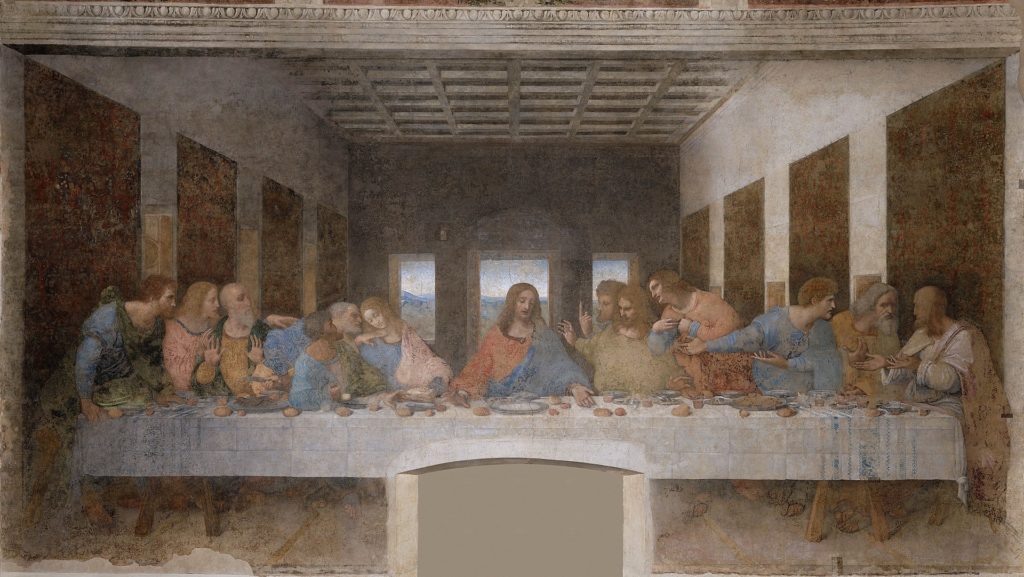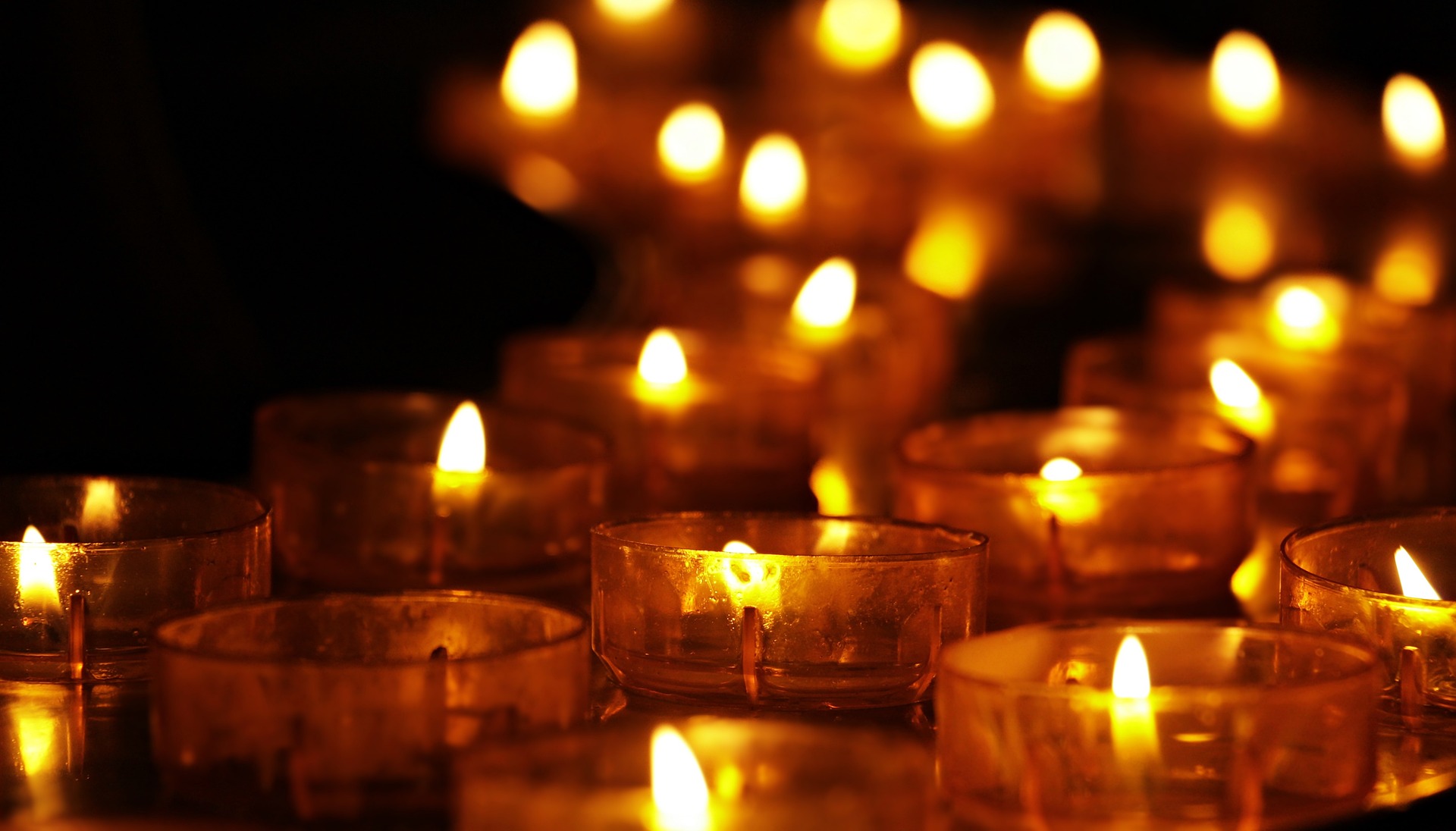Only three days left until Easter on Sunday.
Maundy Thursday, the Thursday before Easter, is the commemoration of the Last Supper. The “Last Supper” is the name given to the meal (probably a Passover meal) that Jesus ate with his disciples before his Passion. It is one of the oldest Christian feasts; it is not known when it began. Perhaps the twelve Apostles celebrated some version of the Maundy Thursday liturgy in the earliest years of the Church.
The exact date of the Last Supper, and whether or not it was a Passover meal, is the subject of much debate, and theologians and researchers hold many competing theories on the topic. I will not discuss those theories here. Suffice it to say that the Last Supper, and the commemoration of it on Maundy Thursday, are important in almost all Christian denominations.
“The Last Supper,” as Painted by a Genius Artist

Numerous artists have depicted the Last Supper. However, one of the most famous paintings in the world is Leonardo da Vinci’s “The Last Supper” (1495-1498), in the Church of Santa Maria delle Grazie in Milan. The painting is so poorly preserved that it is said to be a miracle that it still exists.
In Leonardo’s painting, Judas, who later betrays Jesus, can be seen holding a bag of money. Although this is not the traditional method of portraying the story as the Bible describes it, it is instantly understood as “Judas the betrayer,” creating a more dramatic effect. And then there is John. Traditionally, John’s head is depicted facing Jesus. In Leonardo’s painting, however, John’s head is facing away from Jesus. This creates a space between Jesus and John, and the visual effect is to draw more attention to Jesus in the center. What is interesting is that only Jesus is depicted with a halo, not his disciples.
Unlike the more traditional work painted by the nun Neri (introduced below), Leonardo’s painting is one in which the human drama between the apostle and Jesus is conveyed with great feeling. While the disciples of Jesus and Jesus are depicted realistically, the painting as a whole gives us a sense of holiness and mystery. The genius of Leonardo da Vinci is truly amazing.
“The Last Supper”, as Painted by a Nun

In a composition very similar to Leonardo’s painting, Plautilla Neri (1524-1588), a Dominican nun, also painted a version of the Last Supper, in Santa Maria Novella in Florence; it is the only surviving painting that bears her signature.
Judas in Neri’s painting is depicted as the biblical figure “who has dipped his hand in the dish” (Matthew 26:23). Also, Judas is the only person depicted in the painting without a haloNeri’s depiction does not emphasize the originality of the artist, as Leonardo’s does, but is traditional and based on the Bible.
While nuns of the time (if they were artists) usually made only small works, such as book illustrations, this is a large 7m x 2m oil painting. I suspect that Neri may have been inspired by Leonardo’s “Last Supper.” Maybe it was the example of Leonardo’s painting that inspired her to make her own painting so large.
The Meaning of Lamentations
Traditionally, on Holy Thursday morning, we sing some verses from the beginning of the Lamentations of Jeremiah (“Lamentationes” in Latin, “Threnoi” in Greek, “Kinoth” in Hebrew). Symbolically, the Lamentations relate to the condition of the world after the murder of the Messiah, and to the condition of a soul that has fallen into sin.
According to Haydock’s Bible commentary, the prophet Jeremiah spoke the words of God relating to the destruction of Jerusalem by the Babylonians. Whether the Lamentations were written before or after the destruction of Jerusalem is unknown.
St. Jerome states that the Lamentations were written before the destruction of Jerusalem, at the time of the death of King Josiah. If so, of course, the same Lamentations could also have been sung again at the time of the death of King Zechariah and the destruction of Jerusalem. Symbolically, the Lamentations relate to the condition of the world after the murder of the Messiah, and to the condition of a soul that has fallen into sin.
Ancient Chant for Maundy Thursday
Gregorian chant began in Rome, and spread throughout the Western world, but Spain and Portugal have their own unique kind of chant, called Mozarabic chant. Like Gregorian chant, Mozarabic chant is sung in Latin. Its melody, perhaps influenced by Arabic music, is a melody of deep sadness befitting a lament. When I listen to the rich spiritual sound of the Mozarabic chanting of the Lamentations, I can feel the close connection between music, prayer, and faith.
Here is the content of the chant, in English (King James Version):
THE
LAMENTATIONS OF JEREMIAH.
——————
CHAPTER I.
1 (Aleph) How doth the city sit solitary, that was full of people!
How is she become as a widow! she that was great among the nations,
And princess among the provinces, how is she become tributary!
2 (Beth) She weepeth sore in the night, and her tears are on her cheeks:
Among all her lovers she hath none to comfort her:
All her friends have dealt treacherously with her, they are become her enemies.
3 (Gimel) Judah is gone into captivity because of affliction, and because of great servitude:
She dwelleth among the heathen, she findeth no rest:
All her persecutors overtook her between the straits.
4 (Daleth) The ways of Zion do mourn, because none come to the solemn feasts:
All her gates are desolate: her priests sigh:
Her virgins are afflicted, and she is in bitterness.
5 (He) Her adversaries are the chief, her enemies prosper;
For the Lord hath afflicted her for the multitude of her transgressions:
Her children are gone into captivity before the enemy.
Traditionally, Holy Thursday Mass was celebrated in the morning, like other Masses, but since Vatican II, it has been celebrated in the evening. In the church, we prayed for families, priests, the sick, the dead, and for the United States to respect all human life (from conception to natural death).
The end of the Lenten season is now only two days away.
